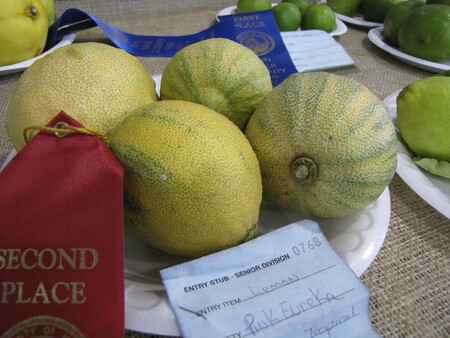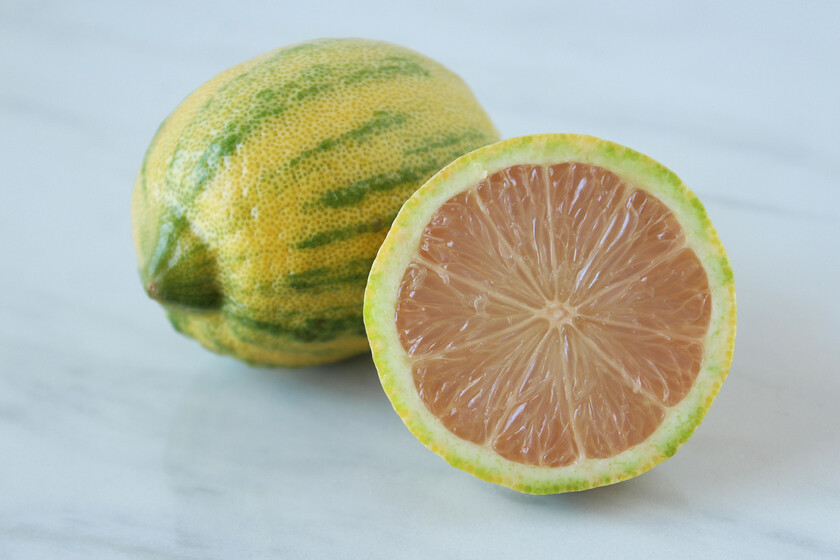The world of citric fruits it goes far beyond oranges, tangerines and lemons, the dominant trio in our orchards. We have been incorporating lime into our pantry for a long time and we are increasingly using citrus fruits such as kumquat or Buddha’s hand, but if there is a cook fascinated by exotic ingredients, that is Dabiz Munoz. Its most recent signing is a peculiar-looking lemon variety that is already grown in Spain.
The finding was shared by the Madrid chef in his presentation at Madrid Fusión entitled “Creative codes: a universe of creativity and avant-garde with three ingredients“, in which Muñoz and his team have presented new proposals for each business model of the group, taking new ingredients from their repertoire as the common thread. Among them, a particular citrus fruit.
The pink lemon, which is one of my latest discoveries. A mix between a grapefruit, bermamot and lime. I am absolutely fascinated by the flavor and the citrus notes that it gives off.
Dabiz Muñoz presenting the pink lemon during his presentation at Madrid Fusión 2023.
It is a pink lemon that goes beyond the peculiar tone of its pulp and, therefore, is much more than a mere decorative fruit that seeks to attract attention due to its attractiveness. In this way, it joins other products from the same family, traditionally used in Asian cuisines such as Chinese or Japanese, and which we will probably see more frequently from now on in restaurants, markets and greengrocers.
The pink lemon, a fruit with less than a century of life
In our country it is known simply as pink lemon, although in English we can find it as variegated pink lemon (variegated pink lemon), lemon rosé either pink-fleshed Eureka lemondenominations that all refer to the most characteristic of its nature, the pale pink of its inner pulp.
This has not yet reached 100 years of life, as it was discovered for the first time on a Burbank plantation, Californiain 1931, from a natural mutation of the Eureka lemon tree. Since then, other varieties selected for cultivation have been produced, based on the original mutation, such as the tiger pink lemon or lemon pink brindle, from 1960, one of those that is already cultivated in Spain, for example in Murcia.

Of size medium or small, slightly larger than a file, its shape is rounded but almost ovoid, slightly conical with usually pointed ends. It has a somewhat rough rind, although not as much as other citrus fruits such as citron, fine and very recognizable by its hue. With a greenish-yellow background, it is covered by green longitudinal striated stripes, which combined with yellow give it a brindle appearance, more marked in some specimens than in others. When the fruit becomes very ripe, it can lose these marks by developing sebaceous glands.
The pulp, pink, juicy and tight, does not usually have seeds or these are few and small. It contains a large amount of juice, which is very light in color and not as pink as one might expect. It stands out particularly for its organoleptic qualities, since it is a fruit with an intense citrus aromavery fresh without being excessively acidic, with hardly any sour notes and a marked fruity flavor with floral hints.

Although its particular potential benefits and culinary possibilities are still in the process of research and development, pink lemon has the same properties as other citrus fruits. With a very low energy content, it is rich in water, fiber, antioxidant vitamins such as vitamin C, vegetable calcium and, in addition, provides lycopeneslinked to that particular color.
They can be used like any other lemon or lime, with the advantage that it provides a less sour and much more balanced flavor, with exotic and fragrant touches. It is perfect for both sweet and salty recipesits squeezed juice is very pleasant on its own or can be diluted with orange, while the zest of its skin is revealed as a powerful seasoning that releases refreshing aromatic compounds.

Petsdelite® Pink Lemon Seed, or Pink-fleshed Eureka Lemon, 8″ Pot, Indoor/Outdoor Cultivar (Hardy in USDA Zones 8-12)
In addition to being able to directly contact producers in the south and southeast of our country, where its cultivation is being explored, it is possible to find the pink lemon in specialized greengrocers and, occasionally, in large supermarkets.
Photos | MichellePatrickPhotographyLLC – Genet – Starr Environmental
In DAP | What is kaffir lime, an essential ingredient of Thai cuisine
In DAP | Blood orange: properties and cooking uses of this exquisite seasonal citrus (and five recipes to make it shine)


